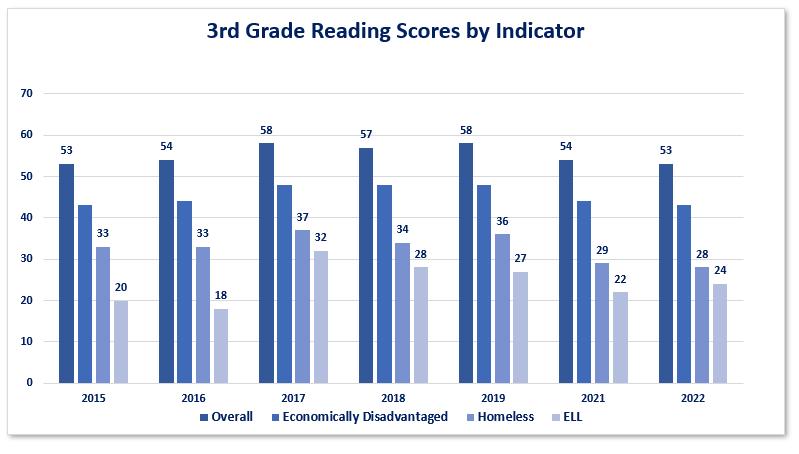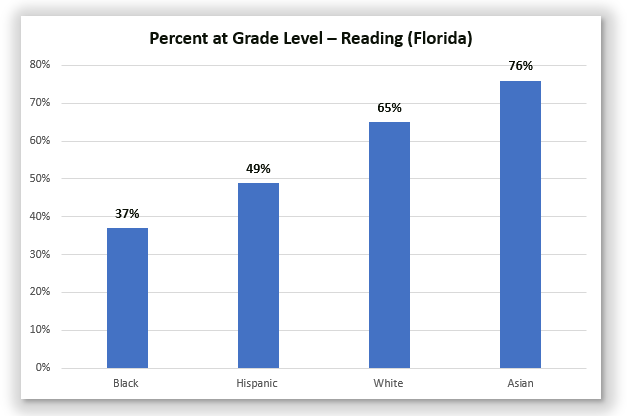Analyzing Florida’s 3rd Grade Reading Gaps on the Path to Prosperity
By: Sheridan Meek, Research Economist, Florida Chamber Foundation

Education is essential to securing and flourishing in jobs that help Floridians pave a pathway to prosperity. There is a distinct relationship between the opportunities a person may have and their ability to succeed academically. Specifically, third grade is when students stop “learning to read” and “start reading to learn.” In fact, most educational content consumed by students after third grade is processed through reading. Zooming in on third grade reading scores, we can see that there is a significant difference in the level of proficiency between all children and children who are specifically economically disadvantaged, homeless or English language learners. The above graph illustrates the percentage of 3rd graders in each category reading at grade level from 2015-2022*. There is a clear gap between the overall levels, and those in each category.
Over this time period, there was an average gap of 10 percentage points between the reading scores in the aggregate, and the scores of students who were economically disadvantaged. The average gap was even larger for homeless students at 22 percentage points. The largest gap of 31 percentage points was for students who are English language learners (ELL).
Additionally, these gaps also exist amongst demographic lines.

The Florida Business Alliance for Early Learning Project is engaging with business, policy, and non-profit leaders to identify solutions, and target them in the greatest areas of need. To learn how to engage in our effort, please contact Zenani Johnson at zjohnson@flchamber.com.
Source: Florida Department of Education
*2020 data is not available as state tests were not administered due to the COVID-19 pandemic